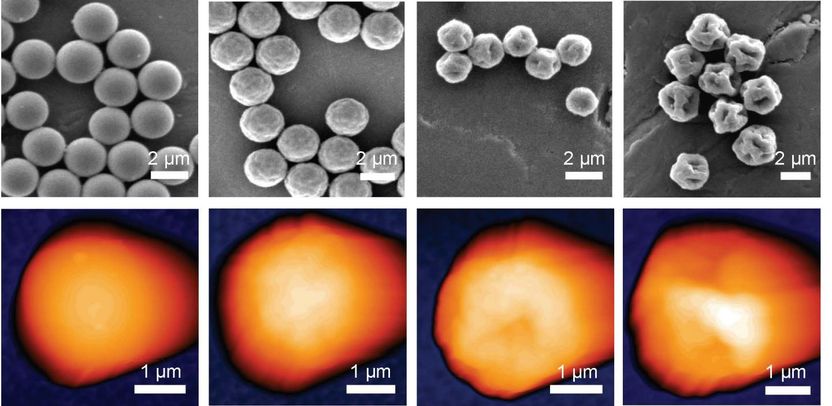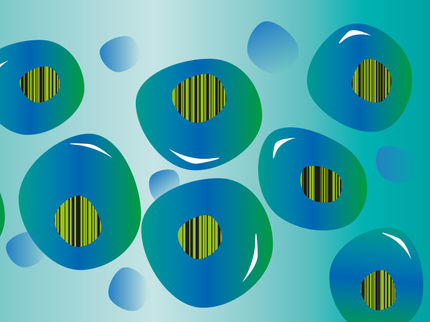Research team shows how a cell’s form can be reversed
Light-switchable molecules in membranes enable different forms of living cells to be studied
A research team led by Prof. Bart Jan Ravoo (University of Münster) and Prof. Timo Betz (University of Göttingen) describes for the first time how living cells can be reversibly deformed by specifically influencing the cell membrane using light.
Membranes fulfil a variety of tasks in living cells: for example, they separate the cells from their surroundings and thus protect them. Also, by means of transport proteins they convey the necessary nutrients to the interior. Membranes also play a major role when cells grow together to form tissue, when they proliferate by dividing, or when they move. A team of researchers led by Prof. Bart Jan Ravoo from the Institute of Organic Chemistry at the University of Münster, and by Prof. Timo Betz from the Third Institute of Physics – Biophysics at the University of Göttingen, are now the first to describe how living cells can have their shape reversed through targeting the cell membrane by means of light. The study has been published in the journal Nature Communications.
In a laboratory experiment, the team succeeded in changing the shape of red blood corpuscles. These cells are normally disc-shaped (“discocytes”), but they can also take on a prickly form with projections on the surface (“echinocytes” or “burr cells”). For their experiment, the researchers used a kind of “molecular light-switch” which they inserted into the cell membranes and which had the effect there of making the cells take on the thorny burr-cell shape. When subjected to ultraviolet light radiation, the cells changed their shape again within seconds and then looked like the flat discocytes which occur in nature. Under visual light, they again assumed their burr-cell shape. This process was repeated several times.
The basis for this change of shape is a molecule which has a similar structure to the molecules in the cell membrane and which has an additional functional unit which responds to light by changing its form: an azobenzene. “Because the azobenzene is hydrophobic – in other words, has water-repellent properties – we additionally inserted a hydrophilic, water-soluble side chain,” explains lead author Dr. Fabian Höglsperger from Bart Jan Ravoo’s team. “This is a design which comes very close to the lipid molecules found in nature in cell membranes. The differences between the azobenzene derivative, which we designed and produced, and the lipid molecules found in nature are small – but they are enough to cause a significant change in the cell membrane by means of light.”
The team’s explanation for the fact that the cells promptly change into the flat form when subjected to ultraviolet light is the changed structure of the azobenzene molecule. There is less likelihood of this changed molecule variant residing in the cell membrane, and the projections occurring in a membrane with the echinocyte form become flatter. When subjected to visual light, the reverse reaction is triggered in the photo-switch, and the echinocyte form regresses.
The study in question deals with basic research. But, as Bart Jan Ravoo says, “In future, this simple but efficient method could help in studying the reactions of cells to their surroundings – depending on their shape – or in using light to control processes such as cell division and cell migration.”
Background details: The change of shape occurring in cells in nature is also due to the structure of the membranes. The double layer of molecules with a hydrophilic head and a hydrophobic side chain is so stable that molecules cannot readily pass through. At the same time, this layer is moveable to enable it to respond to internal and external stimuli. “As is often the case,” says Fabian Höglsperger, “this change of shape is a process which occurs easily in nature but which is difficult to control under laboratory conditions.”
The study brought together researchers from four institutes at the Universities of Münster and Göttingen – with their expertise in the fields of synthetic, theoretical and physical chemistry, as well as biophysics and cell biology. The methods used by the team in their work included spectroscopy and microscopy. The red blood corpuscles were human cells.
Original publication
Most read news
Original publication
Fabian Höglsperger, Bart E. Vos, Arne D. Hofemeier, Maximilian D. Seyfried, Bastian Stövesand, Azadeh Alavizargar, Leon Topp, Andreas Heuer, Timo Betz, Bart Jan Ravoo (2023): Rapid and reversible optical switching of cell membrane area by an amphiphilic azobenzene. Nature Communications 14, 3760
Organizations
Other news from the department science

Get the analytics and lab tech industry in your inbox
By submitting this form you agree that LUMITOS AG will send you the newsletter(s) selected above by email. Your data will not be passed on to third parties. Your data will be stored and processed in accordance with our data protection regulations. LUMITOS may contact you by email for the purpose of advertising or market and opinion surveys. You can revoke your consent at any time without giving reasons to LUMITOS AG, Ernst-Augustin-Str. 2, 12489 Berlin, Germany or by e-mail at revoke@lumitos.com with effect for the future. In addition, each email contains a link to unsubscribe from the corresponding newsletter.
Most read news
More news from our other portals
Last viewed contents

Water: Finding the normal within the weird
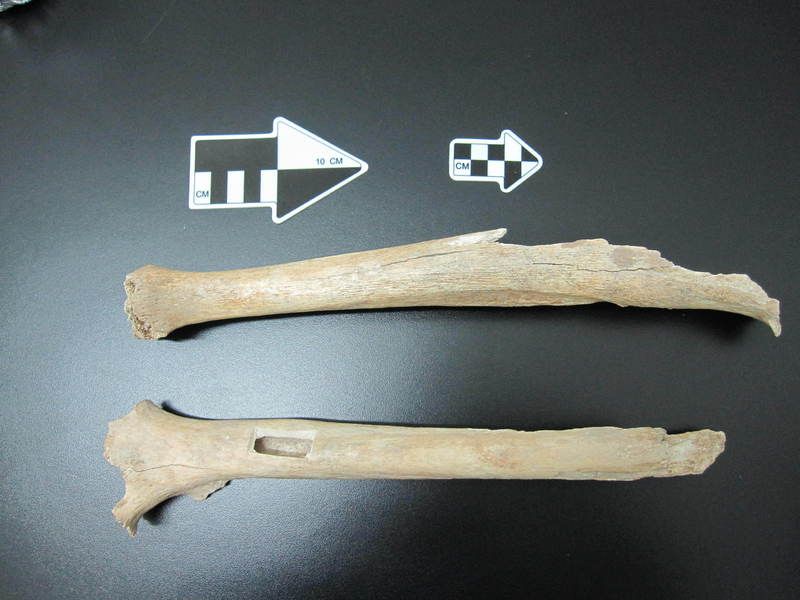
A relative from the Tianyuan Cave - Ancient DNA has revealed that humans living some 40,000 years ago in the area near Beijing were likely related to many present-day Asians and Native Americans
Quick test to detect inflammation in diabetic patients developed

Scientists capture electron transfer image in electrocatalysis process - In-situ electrochemical imaging method with nanoscale spatial resolution combined atomic force microscopy and scanning electrochemical imaging
DKSH exclusively distributes Postnova Analytics’ Field-Flow Fractionation systems - DKSH and Postnova Analytics have signed an exclusive distribution agreement for Malaysia, Singapore, Thailand and Vietnam
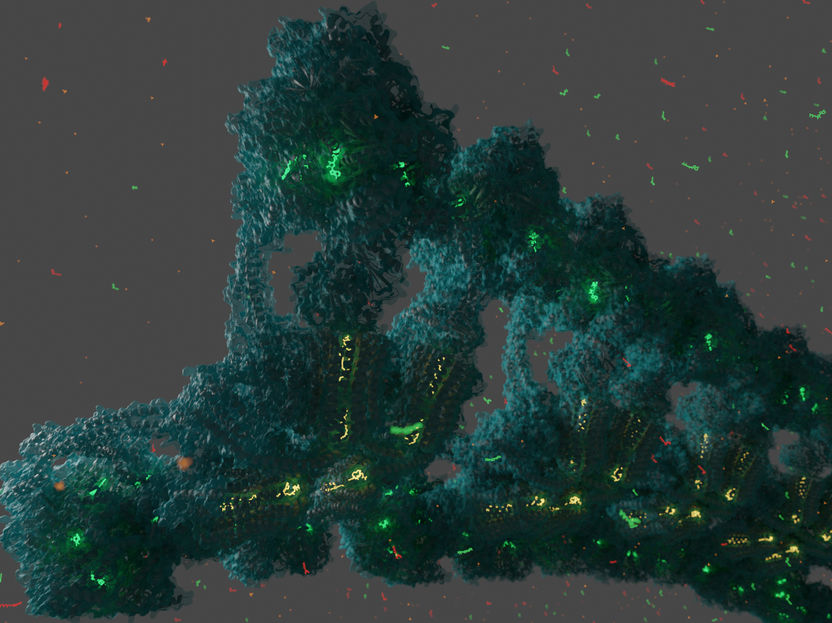
Structure of ATPase, the world’s smallest turbine, solved - Location of the permeability transition pore found
A new quantum component made from graphene - For the first time, ETH Zurich researchers have been able to make a superconducting component from graphene that is quantum coherent and sensitive to magnetic fields
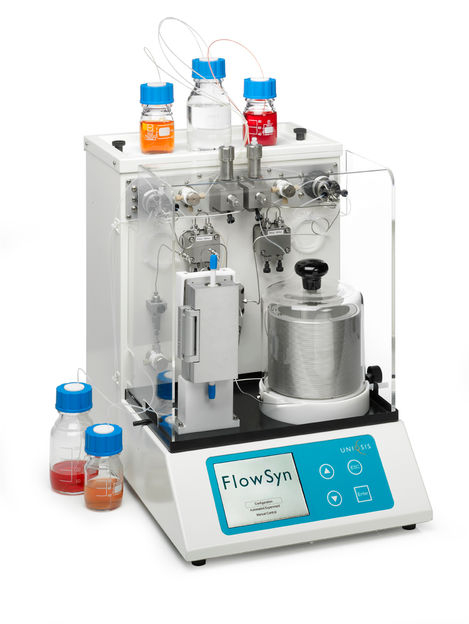
FlowSyn and FlowSyn Maxi | Flow reactors | Uniqsis
Using neutrons to peer inside a battery designed for hybrid locomotives - Study is a collaboration between General Electric and Technische Universitaet Muenchen
Automated anatomic pathology labs transform global tissue diagnostics market - Offering attractive procurement strategies will boost adoption of high-end tools
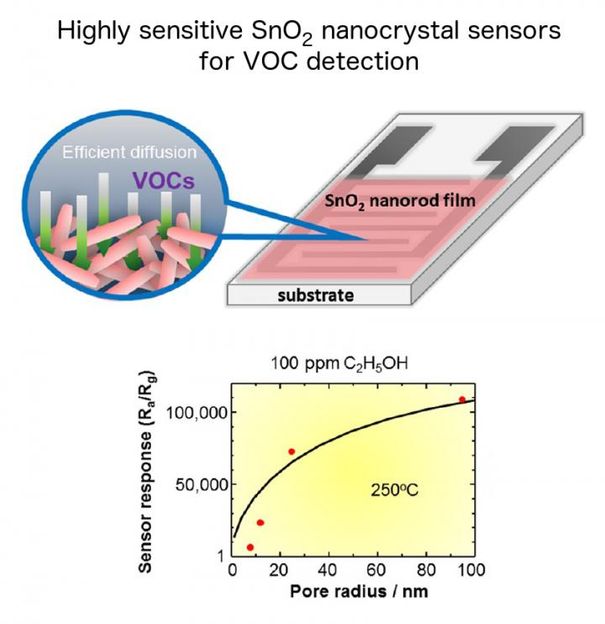
Highly sensitive gas sensors for volatile organic compound detection
